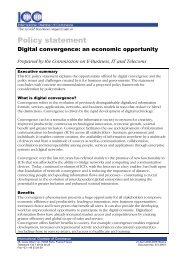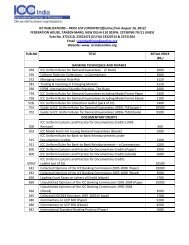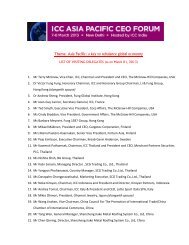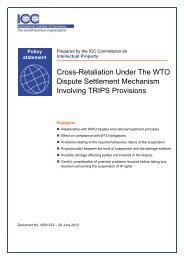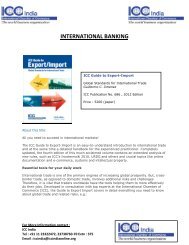2013 - ICC India
2013 - ICC India
2013 - ICC India
- No tags were found...
You also want an ePaper? Increase the reach of your titles
YUMPU automatically turns print PDFs into web optimized ePapers that Google loves.
<strong>ICC</strong> BANKING COMMISSION | <strong>2013</strong> GLOBAL RISKS TRADE FINANCE | ANALYSIS OF SHORT-TERM PRODUCTS 193.1.2. Variability of default rates across the economic cycleAnother potentially important driver of default behaviour for trade financeproducts is macroeconomic trends. First, we compare transactions wherethe counterparty is located in a country in recession 16 to those in a countryexperiencing positive growth. Figure 13 compares this across products.FIGURE 13Proportion of transactions defaulting for growingcountries versus countries in recession, 2008-11%0.09%0.08%0.07%0.06%0.05%0.04%0.03%0.02%0.01%0.00%Import L/CsExportconfirmed L/CsLoans for importLoans for export:Bank riskLoans for export:Corporate riskPerformanceguaranteesRecessionNo recessionFor a majority of products the default rate for countries in recessionis higher, as might be expected 17 . As a country experiences recession,counterparties within it become less liquid and so the likelihood of late ornon-payment of loans increases, as does the likelihood of them failing tofulfil their obligations on L/C or guarantee covered transactions.Another way to infer whether macro-economic development impactsdefault characteristics is provided by a time series analysis. Indeed weobserve higher default rates in 2008-2009 compared wtih 2010-2011 as thefollowing graph shows. This could be driven by a combination of negativeGDP growth in many countries and difficulties for banks and corporates inaccessing short term lending to fulfil trade finance obligations due to thefinancial turmoil at the time.



